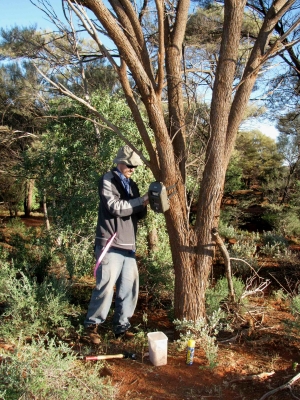Ending the wildlife Catastrophe
Research news
Cats don't just kill to eat.
They kill in surplus.
And when they can kill as many as 10 animals in a night, that begins to have a catastrophic impact, particularly on native wildlife.
According to Deakin University's Dr Euan Ritchie, the dingo may have a real role to play in helping reduce the feline impact on Australia's wildlife.
Talking to renowned science commentator Robyn Williams on The Science Show, Dr Ritchie said: "Well, it's a strange situation I guess to use one predator to fix a problem that of course is with another predator, but what we know from around the world is that top predators or apex predators as some people call them are quite useful in controlling other species.
"And so dingoes actually don't like cats very much, and of course you can think about your neighbour's cat, if you've got a dog they're not going to visit your yard very much. And so dingoes do a very good job of both killing cats, but of course cats, being scared of dingoes, then actually do their best to avoid them.
"An interesting piece of work by one of my PhD students has found that where dingoes are present and abundant, cats are much less active, and they are active in a smaller part of the night. And what that means is I guess it gives a leg-up to the native mammals. Cats are still there but they are much less active than they otherwise would be."
Share this story
 Apex predators as some people call them are quite useful in controlling other species, says Dr Euan Ritchie.
Apex predators as some people call them are quite useful in controlling other species, says Dr Euan Ritchie.
